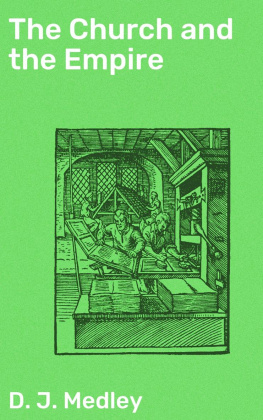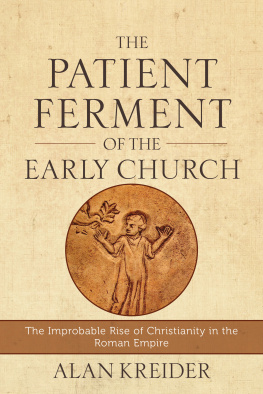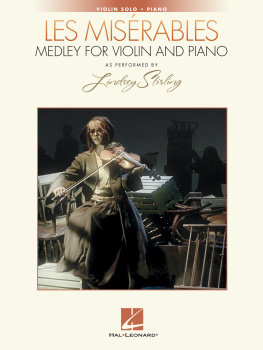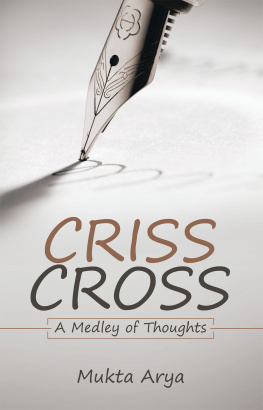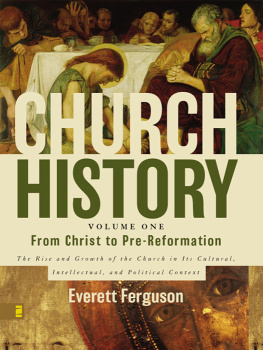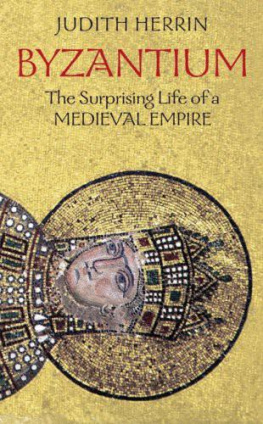PREFACE
Table of Contents
The late appearance of this volume of the series needs someexplanation. Portions of the book have been written at intervals; butit is only the enforced idleness of a long convalescence after illnesswhich has given me the requisite leisure to finish it.
I have tried to avoid overloading my pages with details of politicalhistory; but in no period is it so easy to miss the whole lesson ofevents by an attempt to isolate the special influences which affectedthe organised society of the Church. The interpretation which I haveadopted of the important events at Canossa is not, of course,universally accepted; but the fact that it has seldom found expressionin any English work may serve as my excuse.
The Editor of the series, The Rev. W. H. Hutton, has laid me under adeep obligation, first, by his long forbearance, and more lately, byhis frequent and careful suggestions over the whole book. It isdangerous for laymen to meddle with questions of technical theology. Itrust that, guided by his expert hand, I have not fallen into anyrecognisable heresy!
Mears Ashby,October, 1910.
INTRODUCTORY
CHAPTER ITHE BEGINNINGS OF CHURCH REFORM
CHAPTER IIGREGORY VII AND LAY INVESTITURE
CHAPTER IIITHE END OF THE QUARREL
CHAPTER IVTHE SECULAR CLERGY
CHAPTER VCANONS AND MONKS
CHAPTER VIST. BERNARD
CHAPTER VIITHE SCHOOLMEN AND THEOLOGY
CHAPTER VIIIGUELF AND GHIBELLINE (I)
CHAPTER IXINNOCENT III
CHAPTER XTHE PAPAL POWER IN THE CHURCH
CHAPTER XIDOCTRINE AND DISCIPLINE OF THE CHURCH
CHAPTER XIIHERESIES
CHAPTER XIIITHE MENDICANT ORDERS
CHAPTER XIVTHE CHURCH AND THE HEATHEN
CHAPTER XVGUELF AND GHIBELLINE (II)
CHAPTER XVITHE FALL OF THE EMPIRE AND OF THE PAPACY
CHAPTER XVIITHE CHURCHES OF THE EAST
The Church and the Empire
Introductory
[Sidenote: Political thought in Middle Ages.]
The period of three centuries which forms our theme is the centralperiod of the Middle Ages. Its interests are manifold; but they almostall centre round the great struggle between Empire and Papacy, whichgives to mediaeval history an unity conspicuously lacking in moremodern times. The history of the Church during these three hundredyears is more political than at any other period. In order tounderstand the reason for this it will be well at the outset to sketchin brief outline the political theories propounded in the Middle Ageson the relations of Church and State. So only can we avoid theinevitable confusion of mind which must result from the use of termsfamiliar in modern life.
[Sidenote: Unity of world.]
Medieval thought, then, drawing its materials from Roman, Germanic andChristian sources, conceived the Universe as Civitas Dei, theState of God, embracing both heaven and earth, with God as at once thesource, the guide and the ultimate goal. Now this Universe containsnumerous parts, one of which is composed of mankind; and the destinyof mankind is identified with that of Christendom. Hence it followsthat mankind may be described as the Commonwealth of the Human Race;and unity under one law and one government is essential to theattainment of the divine purpose.
[Sidenote: Duality of organisation.]
But this very unity of the whole Universe gives a double aspect to thelife of mankind, which has to be spent in this world with a view toits continuation in the next. Thus God has appointed two separateOrders, each complete in its own sphere, the one concerned with thearrangement of affairs for this life, the other charged with thepreparation of mankind for the life to come.
[Sidenote: Relations of Church and State.]
But this dualism of allegiance was in direct conflict with the idea ofunity. The two separate Orders were distinguished asSacerdotium and Regnum or Imperium; and the needfelt by mediaeval thinkers for reconciling these two in the higherunity of the Civitas Dei began speculations on the relationbetween the ecclesiastical and the secular spheres.
[Sidenote: Theory of Church party.]
The champions of the former found a reconciliation of the two spheresto consist in the absorption of the secular by the ecclesiastical. Theone community into which, by the admission of all, united mankind wasgathered, must needs be the Church of God. Of this Christ is the Head.But in order to realise this unity on earth Christ has appointed arepresentative, the Pope, who is therefore the head of both spheres inthis world. But along with this unity it must be allowed that God hassanctioned the separate existence of the secular no less than that ofthe ecclesiastical dominion. This separation, however, according tothe advocates of papal power, did not affect the deposit of authority,but affected merely the manner of its exercise. Spiritual and temporalpower in this world alike belonged to the representative of Christ.
[Sidenote: Sinful origin of State.]
But the bolder advocates of ecclesiastical power were ready to explainaway the divine sanction of temporal authority. Actually existingstates have often originated in violence. Thus the State in itsearthly origin may be regarded as the work of human nature as affectedby the Fall of Man: like sin itself, it is permitted by God.Consequently it needs the sanction of the Church in order to removethe taint. Hence, at best, the temporal power is subject to theecclesiastical: it is merely a means for working out the higherpurpose entrusted to the Church. Pope Gregory VII goes farther stillin depreciation of the temporal power. He declares roundly that it isthe work of sin and the devil. "Who does not know," he writes, "thatkings and dukes have derived their power from those who, ignoring God,in their blind desire and intolerable presumption have aspired to ruleover their equals, that is, men, by pride, plunder, perfidy, murder,in short by every kind of wickedness, at the instigation of the princeof this world, namely, the devil?" But in this he is only re-echoingthe teaching of St. Augustine; and he is followed, among otherrepresentative writers, by John of Salisbury, the secretary andchampion of Thomas Becket, and by Pope Innocent III. To all threethere is an instructive contrast between a power divinely conferredand one that has at the best been wrested from God by humanimportunity.
[Sidenote: Illustration of relations.]
There are two illustrations of the relation between the spiritual andsecular powers very common among papal writers. Gregory VII, at thebeginning of his reign, compares them to the two eyes in a man's head.But he soon substitutes for this symbol of theoretical equality acomparison to the sun and moon, or to the soul and body, whereby heclaims for the spiritual authority, as represented by the soul or thesun, the operative and illuminating power in the world, without andapart from which the temporal authority has no efficacy and scarcelyany existence. An illustration equally common, but susceptible of morediverse interpretation, was drawn from the two swords offered to ourLord by His disciples just before the betrayal. It was St. Bernardwho, taking up the idea of previous writers that these represented thesword of the flesh and the sword of the spirit respectively, firstclaimed that they both belonged to the Church, but that, while thelatter was wielded immediately by St. Peter's successor, theinjunction to the Apostle to put up in its sheath the sword of theflesh which he had drawn in defence of Christ, merely indicated thathe was not to handle it himself. Consequently he had entrusted to layhands this sword which denotes the temporal power. Both swords,however, still belonged to the Pope and typified his universalcontrol. By virtue of his possession of the spiritual sword he can usespiritual means for supervising or correcting all secular acts. Butalthough he should render to Caesar what is Caesar's, yet his materialpower over the temporal sword also justifies the Pope in interveningin temporal matters when necessity demands. This is the explanation ofthe much debated


